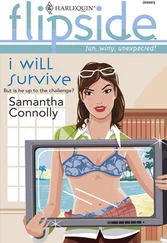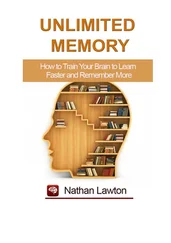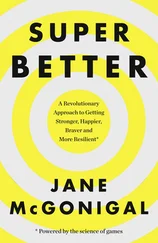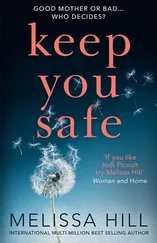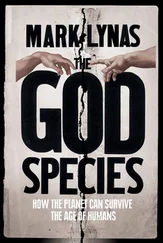2. “small-plot intensive farming” (SPIN): You can learn more about SPIN, and view a number of articles and videos about the system, on its website here: http://spinfarming.com/whatsSpin/.
3. skyscraper farms: See Dickson Despommier, The Vertical Farm: Feeding the World in the 21st Century (New York: Thomas Dunne Books, 2010).
4. A popular way to transform cities in Germany is by building green roofs: Not likely to be used as a food supply: Khandaker M. Shariful Islam, “Rooftop Gardening as a Strategy of Urban Agriculture for Food Security: The Case of Dhaka City, Bangladesh,” Acta Horticulturae 643 (2004).
Might help with reduction in cost of cooling buildings: S. Gaffin et al., “Energy Balance Modeling Applied to a Comparison of White and Green Roof Cooling Efficiency and Cool Surfaces and Shade Trees to Reduce Energy Use and Improve Air Quality in Urban Areas,” Greening Rooftops for Sustainable Communities Proceedings (Washington, D.C.: Green Roofs for Healthy Cities, 2005).
Storm-water runoff: Doug Hutchinson, Peter Abrams, Ryan Retzlaff, and Tom Liptan, “Stormwater Monitoring Two Ecoroofs in Portland, Oregon, USA,” proceedings for Greening Rooftops for Sustainable Communities Conference (Chicago: Green Roofs for Healthy Cities, 2003).
5. without burning coal: One of the big issues with variable power sources like solar and wind is storage. For an excellent and thorough treatment of how we could transition our energy infrastructure over to systems that rely partly on variable power, see Maggie Koerth-Baker’s excellent book Before the Lights Go Out: Conquering the Energy Crisis Before It Conquers Us (Hoboken, NJ: Wiley and Sons, 2012).
6. MIT’s environmental-policy professor Judith Layzer: Personal interview, August 22, 2011.
7. vulnerable to the vicissitudes of climate: One of the issues here is obviously the current trend toward a general warming of the global climate. Cities located in fertile areas could, in just a century, find themselves trapped in arid, drought-racked landscapes. This is something that land planners are already worried about, and are preparing for today. How do we build cities and farms that are ready for radical climate change? The environmental journalist Mark Hertsgaard deals with this extensively in Hot: Living Through the Next Fifty Years on Earth (New York: Houghton Mifflin Harcourt, 2011).
8. Amy McNally, a geography researcher with the group: Personal interview, February 27, 2012.
9. But it’s possible that our political priorities: How would we transform the political and social landscape to prioritize environmental concerns? This is an enormous question that is outside the scope of this book, but luckily many other thinkers have tackled it, including Judith Layzer in The Environmental Case: Translating Values into Policy (Third Edition) (Thousand Oaks, CA: CQ Press College, 2011).
10. New York architect David Benjamin: Personal interview, April 5, 2012. For more about his AutoCAD-like software for biological design, you can look at the project website: http://www.autodeskresearch.com/projects/biocompevolution.
11. The students described BacillaFilla: For more about this substance, you can see the BacillaFilla project page here: http://2010.igem.org/Team:Newcastle.
12. synthetic-biology designer Rachel Armstrong’s: Personal interview, May 5, 2012.
13. who hope to use experimental proto-cells: Armstrong describes some of her work on the Venice reef in her e-book Living Architecture: How Synthetic Biology Can Remake Our Cities and Reshape Our Lives (TED Books, 2012).
CHAPTER NINETEEN: TERRAFORMING EARTH
1. Bill McKibben and Mark Hertsgaard: See, for example, McKibben’s books The End of Nature (New York: Random House, 1989) and Eaarth: Making a Life on a Tough New Planet (New York: Times Books, 2010); and Hertsgaard’s Hot: Living Through the Next 50 Years on Earth (New York: Houghton Mifflin Harcourt, 2011).
2. Maggie Koerth-Baker points out: Maggie Koerth-Baker, Before the Lights Go Out: Conquering the Energy Crisis Before It Conquers Us (New York: Wiley, 2012).
3. Government representatives who attend the annual U.N. Climate Change Conferences: Currently, our most urgent task as a planet is to form international agreements that limit carbon emissions. The only certainty when it comes to climate change is that if we limit fossil-fuel use we will slow down the warming process that threatens to cause food shortages and the sixth mass extinction. We already have the technological ability to reduce carbon emissions. How we will do it politically and socially is outside the scope of this book, though it’s likely that the same international bodies regulating emissions will ultimately regulate any geoengineering projects we undertake.
4. “hack the planet,” as they say in science-fiction movies: I am, of course, referring to the famously silly (but undeniably awesome) 1990s movie Hackers, where two characters have a TV show called Hack the Planet .
5. Futurist Jamais Cascio: Personal interview, July 9, 2012. You can read Hacking the Earth: Understanding the Consequences of Geoengineering online: http://openthefuture.com/2009/02/hacking_the_earth.html.
6. sulfur-laced aerosol exhaust emitted: There are a number of studies showing a connection between ship aerosols and changes in the albedo of clouds. For example, P. A. Durkee et al., “The Impact of Ship-Produced Aerosols on the Microstructure and Albedo of Warm Marine Stratocumulus Clouds: A Test of MAST Hypotheses 1i and 1ii,” Journal of the Atmospheric Sciences 57 (February 12, 1999): 2554–69. Using this as a form of geoengineering is discussed in part in Y.-C. Chen et al., “Occurrence of Lower Cloud Albedo in Ship Tracks,” Atmospheric Chemistry and Physics Discussions 12 (2012): 13553–80. It remains unclear whether these ship aerosols are actually having a substantial effect on clouds and weather. See K. Peters et al., “A Search for Large-scale Effects of Ship Emissions on Clouds and Radiation in Satellite Data,” Journal of Geophysical Research 116 (2011): D24205.
7. One of its researchers is Simon Driscoll: Personal interview, May 11, 2012.
8. The Harvard physicist and public-policy professor David Keith: See David W. Keith, “Photophoretic Levitation of Engineered Aerosols for Geoengineering,” Proceedings of the National Academy of Sciences 107 (September 7, 2010): 16428–31.
9. Driscoll’s colleagues at Oxford believe: See, for example, an experiment proposed by the group Driscoll works with, called Stratospheric Particle Injection for Climate Engineering (SPICE), in which researchers have suggested they would accomplish atmospheric injection via a balloon tethered to the ocean: http://www2.eng.cam.ac.uk/~hemh/SPICE/SPICE.htm.
10. Alan Robock has run a number of computer simulations: Alan Robock, “20 Reasons Why Geoengineering May Be a Bad Idea,” Bulletin of the Atomic Scientists 62 (May/June 2008): 14–18.
11. During many of the experiments, however: This difficulty is explored in the Royal Society report Geoengineering the Climate: Science, Governance and Uncertainty (London: the Royal Society, 2009). More recent experiments with iron fertilization appear to work somewhat better than the ones described in the Royal Society report. See Victor Smetacek et al., “Deep Carbon Export from a Southern Ocean Iron-Fertilized Diatom Bloom,” Nature 487 (July 2012): 313–19. Smetacek and his colleagues report that the algae they worked with fell over 1,000 meters into the deep ocean, often finding its way into sediment on the ocean floor.
12. Tim Kruger, who heads the Oxford Martin School’s geoengineering efforts: Personal interview, May 10, 2012.
Читать дальше
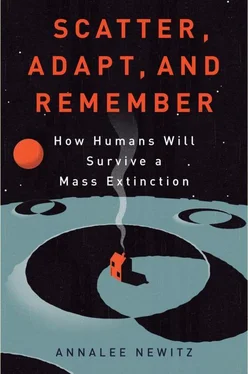

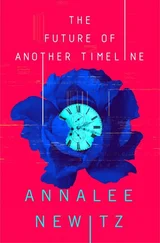



![Аннали Ньюиц - Автономность [litres]](/books/424681/annali-nyuic-avtonomnost-litres-thumb.webp)
